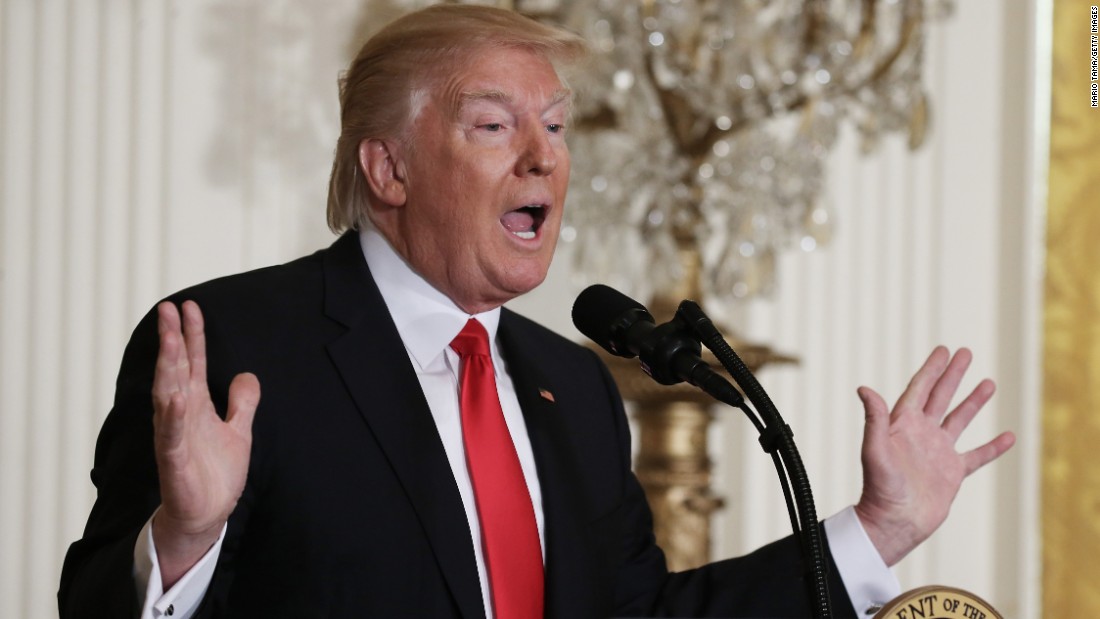Trump Press Conferences

Donald Trump’s press conferences were a defining feature of his presidency, often characterized by their length, contentiousness, and dramatic pronouncements. They were a platform for him to directly engage with the media, often bypassing traditional channels of communication and engaging in a highly personalized style of interaction.
Timeline of Significant Trump Press Conferences
Trump’s press conferences were not just routine events; they were often intertwined with major political events and controversies.
- January 21, 2017: Trump’s first press conference as President, held at the White House, was marked by controversy. He made unfounded claims about voter fraud and alleged a “tremendous number” of people who were “illegal” in the United States.
- February 16, 2017: During a press conference in the Rose Garden, Trump addressed the ongoing investigation into Russian interference in the 2016 election. He claimed that the investigation was a “witch hunt” and a “hoax.”
- January 11, 2018: Trump held a lengthy press conference, lasting over an hour, where he made a series of controversial statements, including his belief that the media was “the enemy of the American people.”
- July 16, 2018: During a joint press conference with Russian President Vladimir Putin, Trump appeared to side with Putin over US intelligence agencies on the question of Russian interference in the 2016 election. This event drew widespread criticism.
- June 16, 2020: In a press conference following the death of George Floyd, Trump made a series of inflammatory statements about racial tensions and violence in the United States. He threatened to deploy the military to quell protests.
Evolution of Trump’s Press Conference Style, Trump press conference
Trump’s press conference style was unique and often defied traditional norms.
- Early in his presidency, Trump’s press conferences were often characterized by their length and their focus on attacking his opponents. He frequently made claims without evidence and often contradicted himself.
- As his presidency progressed, Trump’s press conferences became more focused on promoting his agenda and attacking the media. He often refused to answer questions from reporters he perceived as hostile and frequently used the platform to spread misinformation.
- Trump’s press conferences were often marked by their theatricality. He frequently interrupted reporters, engaged in personal attacks, and made dramatic pronouncements.
Impact of Trump’s Press Conferences on Public Opinion and Media Coverage
Trump’s press conferences had a significant impact on public opinion and media coverage.
- Trump’s press conferences were often divisive, with his supporters praising his directness and his willingness to challenge the media, while his critics condemned his behavior as unprofessional and disrespectful.
- The media’s coverage of Trump’s press conferences was often highly critical, with many outlets focusing on his falsehoods, his attacks on the media, and his overall demeanor.
- Trump’s press conferences often dominated the news cycle, with his statements and pronouncements frequently making headlines.
Trump press conference – Trump’s press conferences were often marked by a chaotic energy, a blend of fiery rhetoric and impromptu pronouncements. While these events were often criticized for their lack of factual accuracy, they served as a platform for him to engage directly with the public, sometimes veering into personal attacks or grand pronouncements about his political adversaries.
His performances in the september presidential debates were often cited as a turning point in his campaign, offering a glimpse into his unpredictable and confrontational style that resonated with some voters. Whether you loved him or loathed him, Trump’s press conferences were always a spectacle, leaving a lasting impact on American politics and the media landscape.
Trump’s press conferences were often spectacles, with a large, imposing podium serving as his stage. This stage, reminiscent of a boss table and chair setup, symbolized his perceived power and dominance. He would often stand behind it, gesturing with his hands and speaking in a commanding tone, reinforcing the image of a powerful leader.
His use of the podium, like a skilled orator, amplified his voice and presence, captivating the audience and leaving a lasting impression.
